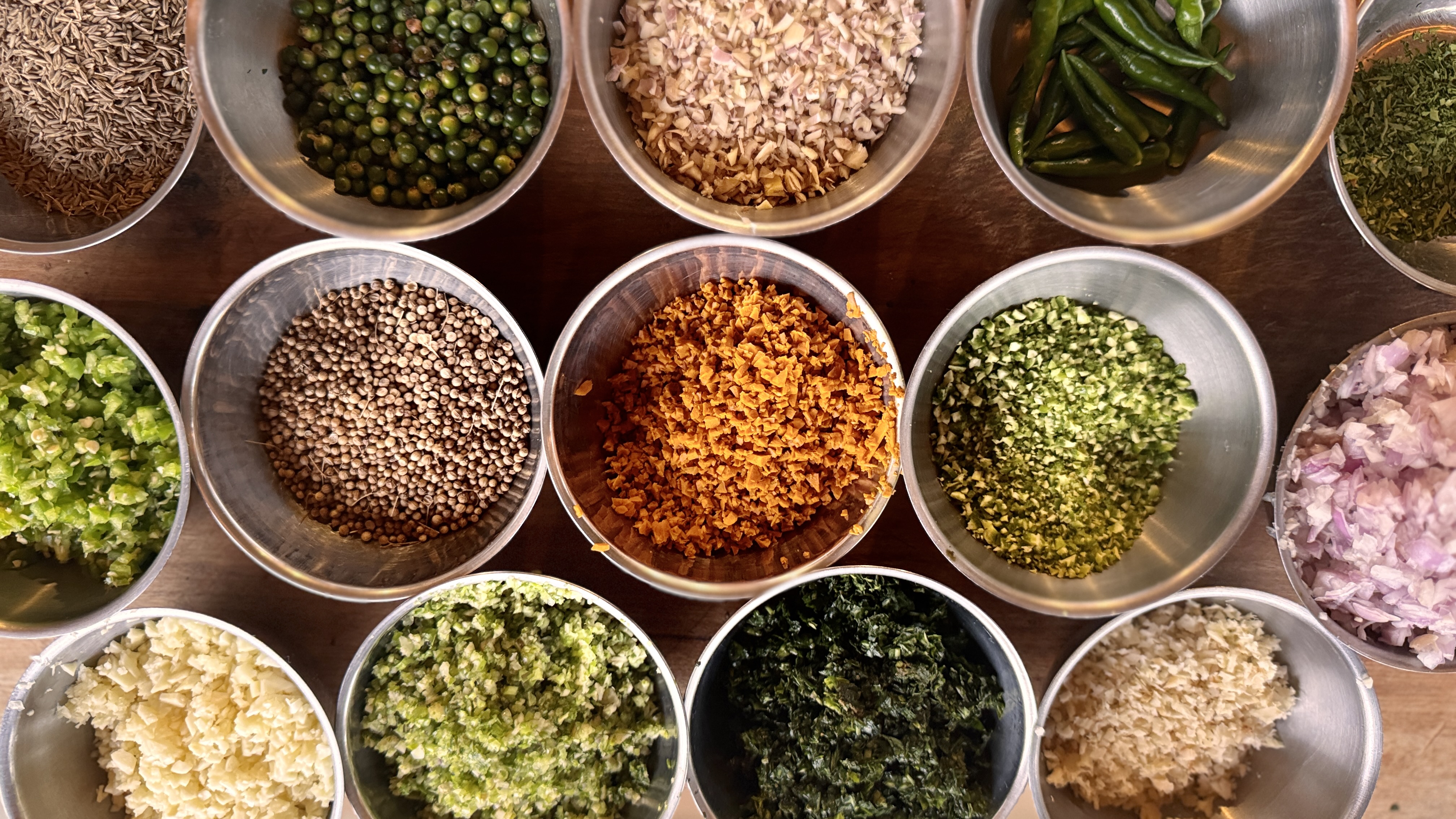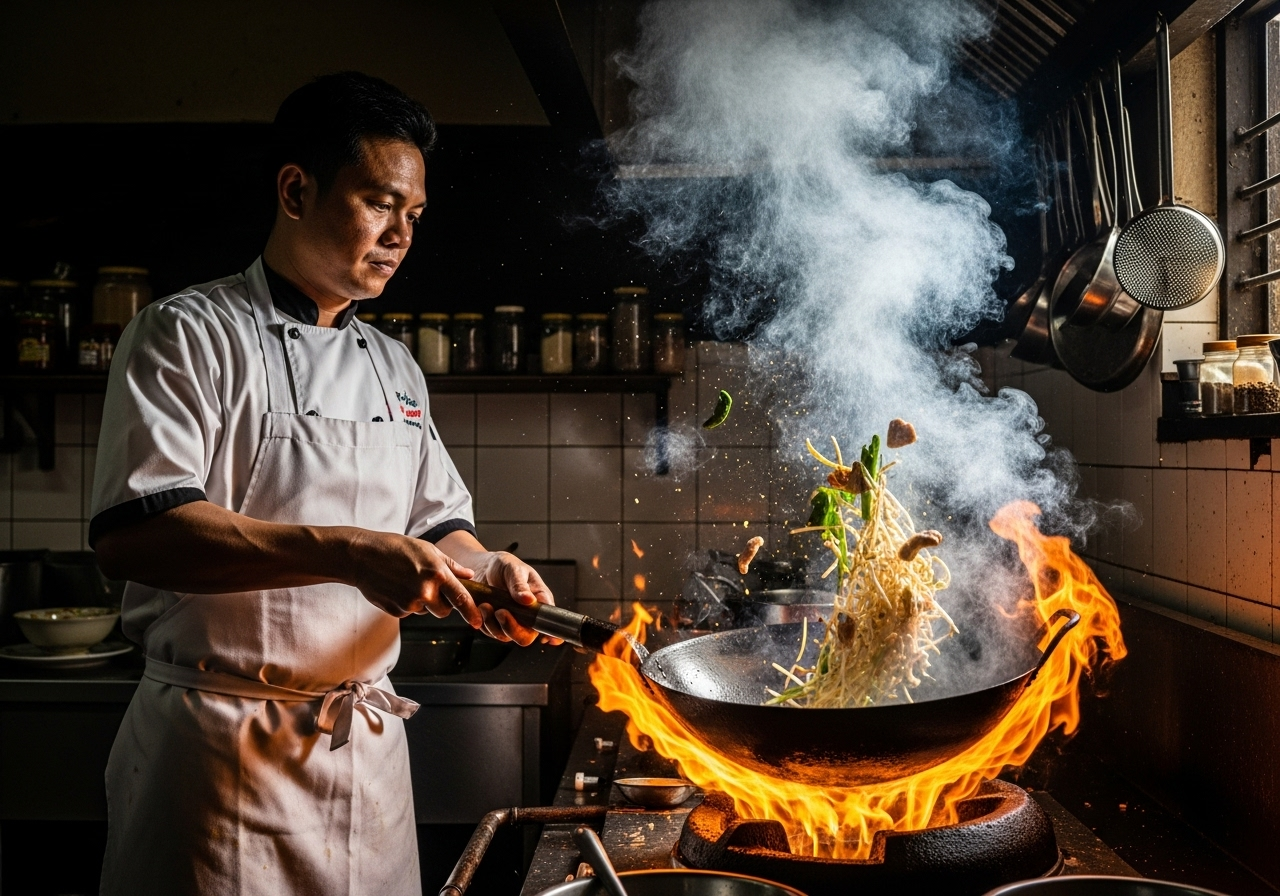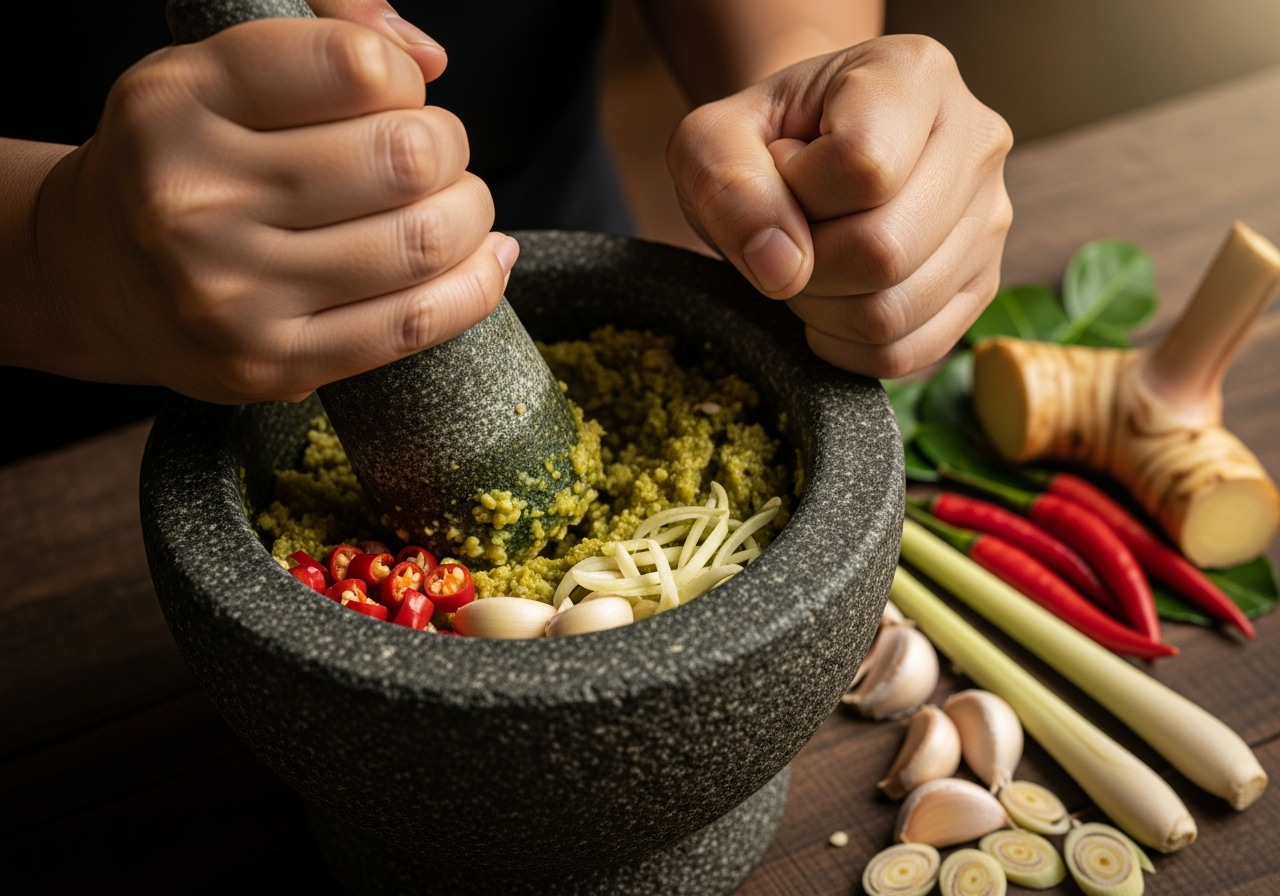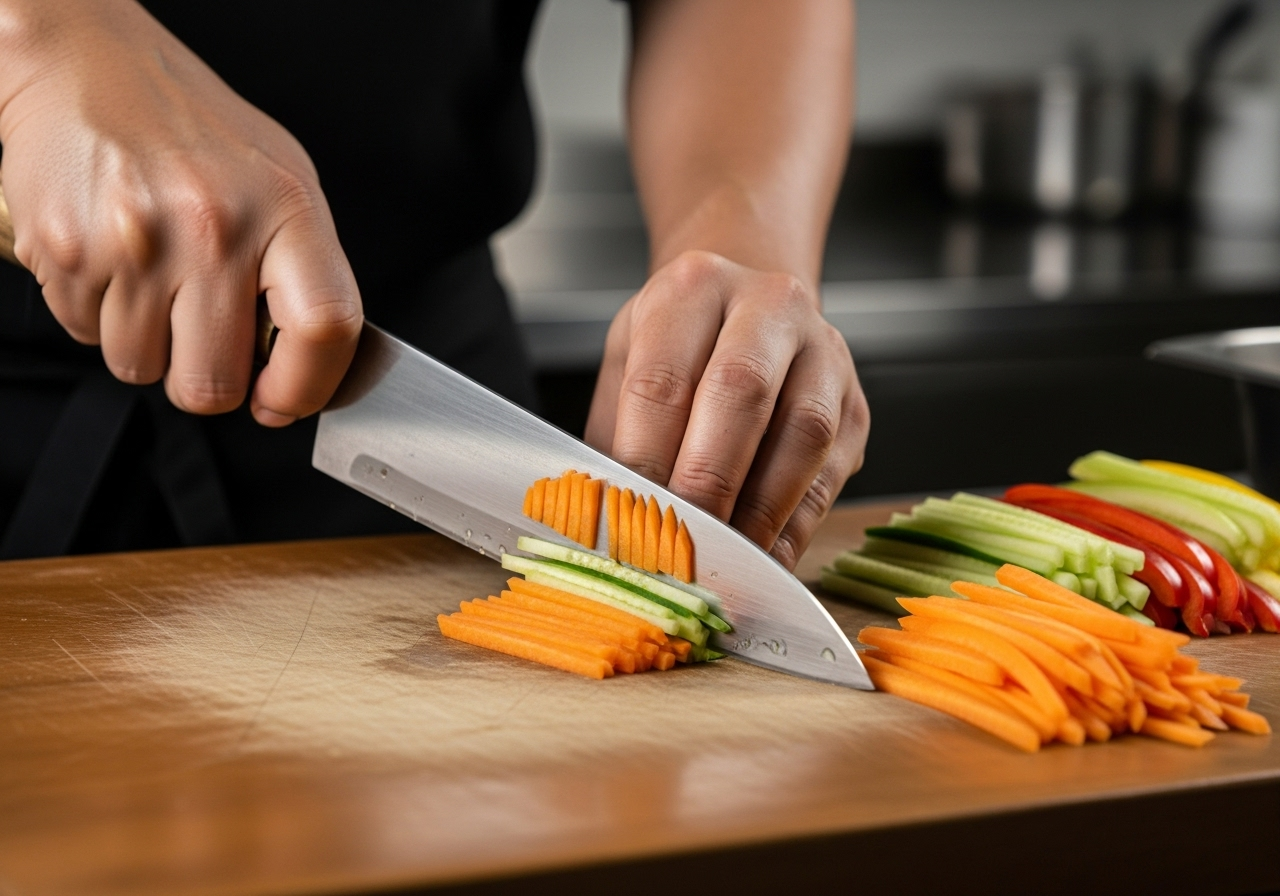
Master Thai Cooking Techniques
Learn authentic methods from expert chefs. From wok mastery to traditional curry paste making, discover the techniques that create extraordinary Thai flavors.
Essential Thai Cooking Techniques
Master the fundamental techniques that create authentic Thai flavors. Each method includes step-by-step instructions and professional tips.

Mastering Wok Hei (Breath of the Wok)
Learn the fundamental technique of achieving "wok hei" - the smoky, charred flavor that defines authentic Thai stir-fries. This technique requires high heat and precise timing.
Equipment Needed
Key Success Points
Step-by-Step Instructions
Heat empty wok over highest heat for 2-3 minutes until smoking
Add oil and swirl to coat, oil should shimmer immediately
Add aromatics (garlic, ginger) for 10-15 seconds
Add protein first, let sear without moving for 30 seconds
Stir-fry protein until 80% cooked, push to one side
Add vegetables in order of cooking time needed
Keep ingredients moving constantly with tossing motion
Add sauce only in final 30 seconds to prevent steaming
💡 Pro Tips

Traditional Curry Paste Preparation
Master the art of making authentic Thai curry pastes from scratch using traditional mortar and pestle techniques. The foundation of all great Thai curries.
Equipment Needed
Key Success Points
Step-by-Step Instructions
Start with dried chilies, remove stems and seeds if desired
Pound chilies until broken into small pieces
Add salt and continue pounding to create abrasive texture
Add lemongrass (tender white parts only), pound thoroughly
Add galangal pieces, pound until fragrant paste forms
Add garlic and shallots, pound until well incorporated
Add kaffir lime zest, pound until oils are released
Add shrimp paste last, pound until smooth, aromatic paste forms
💡 Pro Tips

Essential Thai Knife Techniques
Learn the fundamental knife skills used in Thai cooking, from julienne vegetables to proper herb preparation. These techniques ensure even cooking and authentic presentation.
Equipment Needed
Key Success Points
Step-by-Step Instructions
Hold knife with thumb and index finger gripping blade
Keep knuckles curved as a guide for blade
For julienne: cut into 2-inch segments, then thin matchsticks
For thai basil: stack leaves, roll tight, cut into thin ribbons
For lemongrass: remove outer layers, slice paper-thin on diagonal
For chilies: remove stems, slice lengthwise, scrape out seeds
For herbs: use sharp, quick cuts to prevent bruising
Clean knife frequently to prevent cross-contamination
💡 Pro Tips

Fresh Coconut Milk Extraction
Traditional method for extracting rich, creamy coconut milk from fresh coconuts. Essential for authentic curry bases and desserts.
Equipment Needed
Key Success Points
Step-by-Step Instructions
Crack coconut, remove meat from shell using coconut tool
Grate coconut meat finely using traditional grater
Place grated coconut in bowl, add 1 cup warm water
Mix thoroughly with hands, squeezing grated coconut
Let sit for 10 minutes to allow extraction
Strain through cheesecloth, squeeze firmly to extract liquid
This first extraction is thick coconut cream
Repeat process with same coconut for thinner milk
💡 Pro Tips

Traditional Thai Steaming Methods
Master the gentle art of Thai steaming using banana leaves and traditional equipment for fish, vegetables, and desserts.
Equipment Needed
Key Success Points
Step-by-Step Instructions
Bring water to rolling boil in steaming pot
Prepare banana leaves by quickly passing over flame
Wrap ingredients in banana leaves, secure with string
Place wrapped items in steaming basket
Cover pot, reduce heat to maintain steady steam
Steam according to ingredient requirements
Check doneness without lifting lid frequently
Remove carefully to avoid steam burns
💡 Pro Tips
Want to Master These Techniques?
Join our hands-on cooking classes where you'll practice these authentic techniques under expert guidance in our traditional jungle kitchen.
Explore More Thai Culinary Adventures
🏝️ Koh Samui Activities Guide
Discover the best activities and attractions on the island, including cooking classes and food experiences.
Explore Activities →🍜 Koh Samui Food Guide
Your complete guide to the best restaurants, street food, and culinary experiences on Koh Samui.
Discover Food →